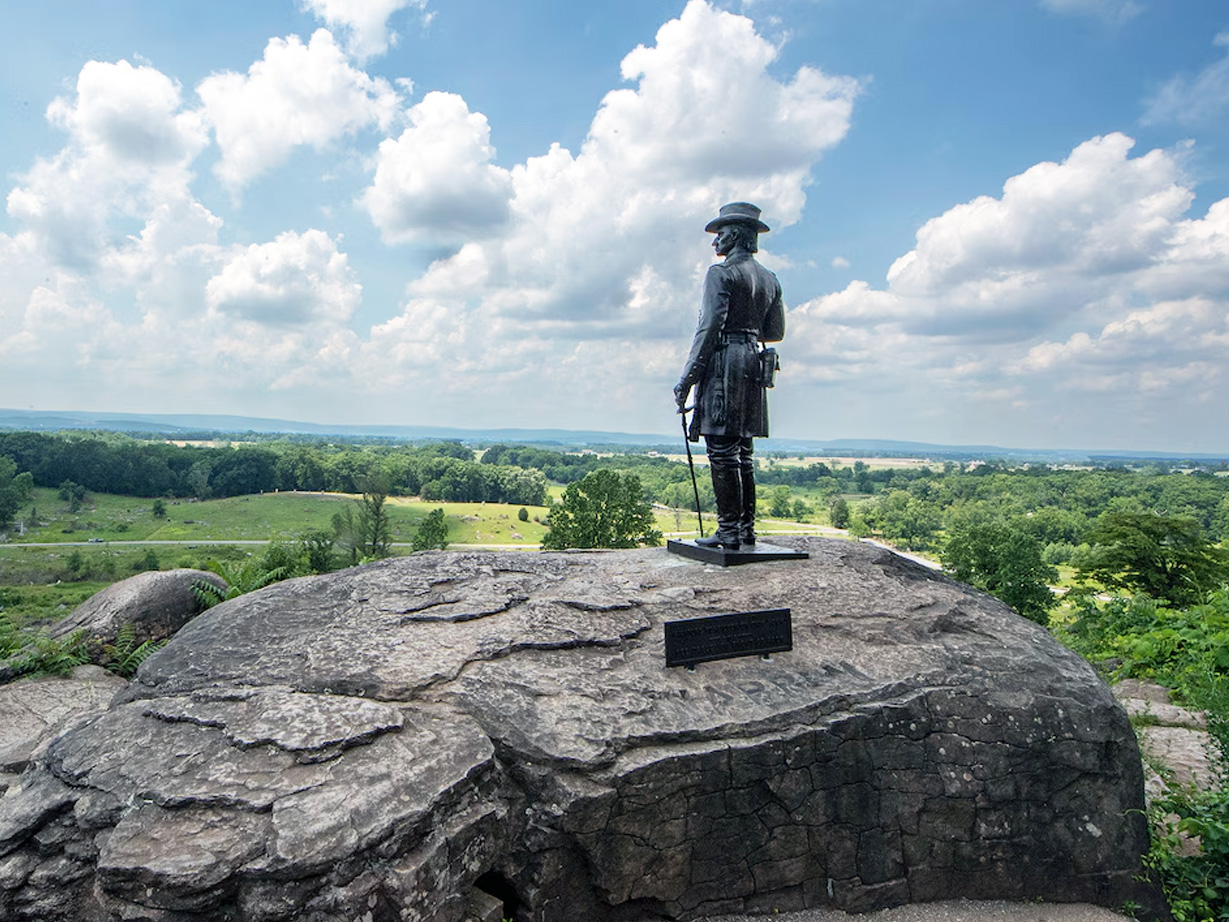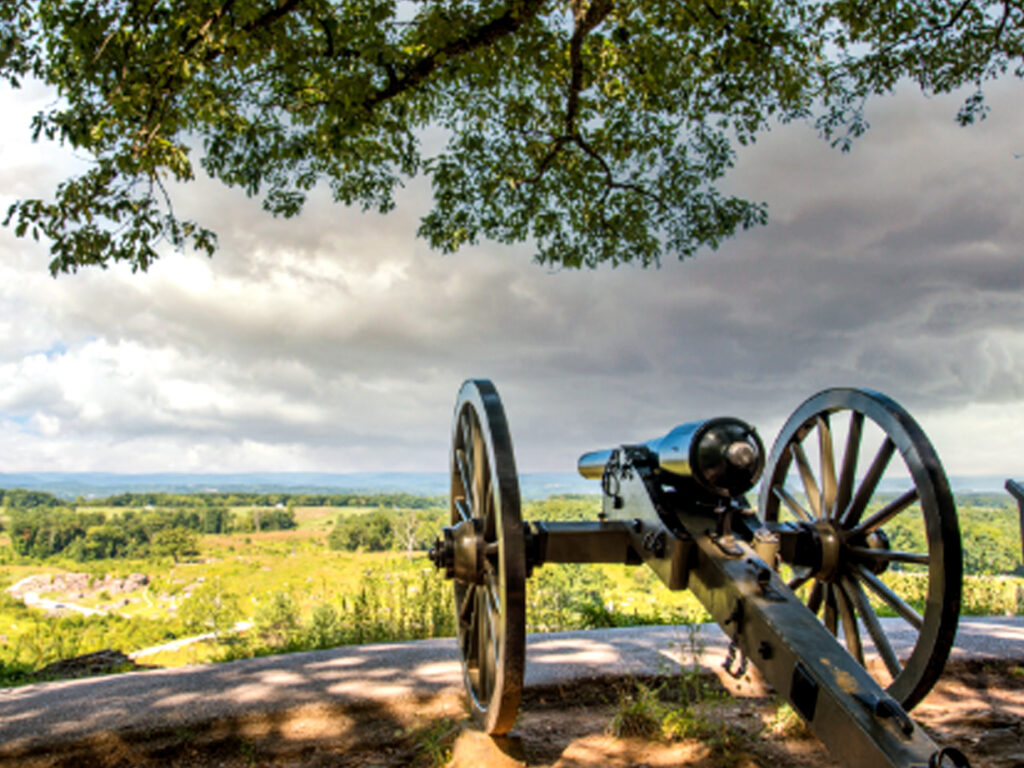
Little Round Top: Steadfast Bulwark in the Defense of Gettysburg
July 29, 2024The Battle of Gettysburg, fought from July 1 to July 3, 1863, stands as one of the pivotal moments in American Civil War history. Among the numerous strategic locations within this battle, Little Round Top holds a place of particular significance. This small, rocky hill on the southern end of the battlefield became the site of intense fighting on the second day of the battle and played a crucial role in the Union Army’s ultimate victory.
The Crucial Role of Little Round Top in the Battle of Gettysburg
Little Round Top provided a commanding view of the surrounding battlefield, making it a critical defensive position. Control of this high ground allowed the Union Army to effectively deploy artillery and infantry, creating a formidable barrier against Confederate forces.
For the Union Army, holding Little Round Top was vital to protect its left flank. If Confederate forces had captured this position, they could have outflanked the Union Army, potentially leading to a catastrophic collapse of the entire Union line.
Defense by the Union Army
The defense of Little Round Top was primarily undertaken by the Union Army’s V Corps, which included the 20th Maine Volunteer Infantry Regiment led by Colonel Joshua Lawrence Chamberlain.
Union Occupation of Little Round Top
On the afternoon of July 2, 1863, Union General Gouverneur K. Warren, Chief Engineer of the Army of the Potomac, realized that Little Round Top was undefended and crucial for the Union’s left flank. He urgently called for reinforcements. Elements of the Union V Corps, specifically the 3rd Brigade of the 1st Division led by Colonel Strong Vincent, were dispatched to occupy the hill. Vincent’s brigade quickly took positions on the southern slope of Little Round Top, consisting of the 20th Maine, 44th New York, 83rd Pennsylvania, and 16th Michigan Infantry regiments.
Vincent’s brigade swiftly positioned themselves to defend against the approaching Confederate forces. Artillery support from Battery D, 5th U.S. Artillery, commanded by Lieutenant Charles E. Hazlett, was also positioned on the summit to provide crucial firepower.
Vincent himself was mortally wounded during the battle. His leadership, however, was instrumental in holding the line and ensuring the Union’s defense of Little Round Top.
The Confederates Attack
Confederate Major General John Bell Hood’s division, part of Lieutenant General James Longstreet’s Corps, launched multiple assaults on Little Round Top. The attacks primarily involved Alabama regiments of Brigadier General Evander M. Law’s brigade and Texas regiments of Brigadier General Jerome B. Robertson’s brigade.
The fighting on Little Round Top was fierce, often involving brutal close-quarters combat and repeated charges and countercharges. The Union forces, despite being outnumbered, managed to hold their ground with remarkable tenacity.
20th Maine’s Defense
The 20th Maine, under the leadership of Colonel Joshua Lawrence Chamberlain, held the extreme left flank of the Union line. Despite being heavily outnumbered and outgunned, they successfully and repeatedly repelled multiple Confederate assaults.
Chamberlain’s Bayonet Charge
When Chamberlain’s regiment ran low on ammunition at the climax of a days-long series of assaults against his position, Chamberlain decisively ordered his men to advance and execute a sweeping bayonet charge down the hill. This unexpected and bold action caught the enemy soldiers completely by surprise, breaking the Confederate assault and resulting in the capture of many rebel soldiers. The action effectively securing the Union’s hold on Little Round Top for the duration of the battle.
Aftermath and Impact
By successfully repelling all Confederate attempts to take Little Round Top, the Union forces solidified their left flank, preventing the Confederates from gaining the strategic height advantage afforded from atop the hill and preventing them from flanking the Union battle lines.
Both sides suffered significant casualties, and acts of heroism were noted on both sides, particularly among the Union defenders. The bravery exhibited by the soldiers on Little Round Top remains a poignant example of courage under fire.
Long-Term Significance
The successful defense of Little Round Top contributed significantly to the overall Union victory at Gettysburg. Today Little Round Top has become a symbol of bravery, tactical ingenuity, and stubborn tenacity amidst the dreadful conflict of the Civil War. It is commemorated as a key moment in American military history and continues to be a place of reflection and education for visitors.

Little Round Top Renovation Update
In the summer of 2022, the Little Round Top area of the Gettysburg battlefield was officially closed to undergo significant renovations to preserve and restore the site after 150 years of wear and tear.
The project was intended to provide enhanced access to a more extensive, safe, and accessible trail system allowing visitors to more easily experience the area’s monuments, cannons, and other points of interest. Eroded soils have been stabilized and re-vegetated, and new interpretive waysides throughout the area now tell the story of those who fought, suffered, and died on the contested hillside. Satellite parking has been expanded and formalized with access to the expanded trail system.
Funding and Support
Funding for the $12.9 million project came from federal funds and private donations, including contributions from the Gettysburg Foundation, National Park Foundation, and American Battlefield Trust.
Little Round Top Reopens to The Public
Nearly two years after being closed for rehabilitation, Little Round Top at Gettysburg National Millitary Park officially reopened to the public on June 21, 2024. After a twenty-two-month closure, the American public is now welcome back to one of the most iconic locations on the Gettysburg battlefield, where visitors can truly experience a meaningful connection to the past and understand the sacrifices made to protect our freedoms.
These improvements to Little Round Top will provide an amazing experience for generations of visitors to come!
Visit Gettysburg in Person
Plan your next excursion with us! Our bus tours of the historic Gettysburg Battlefield are active and ready to show you the sites of the historical battleground. Reservations can be made by calling our toll-free number at 877-680-8687. You can also purchase bus tour tickets online. Tours depart from the Gettysburg Tour Center located at 777 Baltimore St., Suite 100.